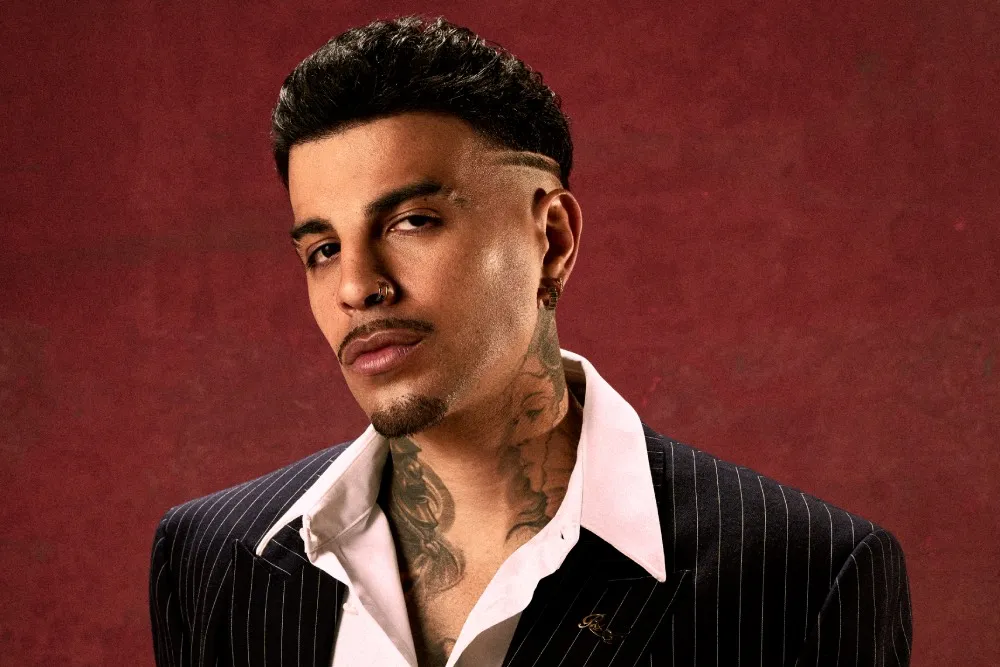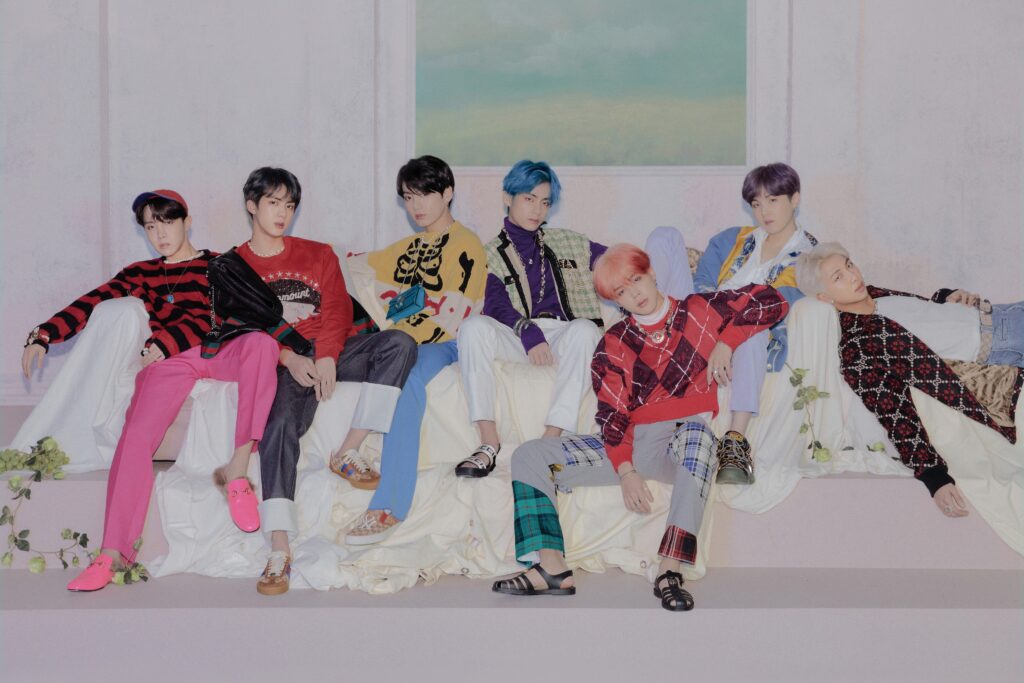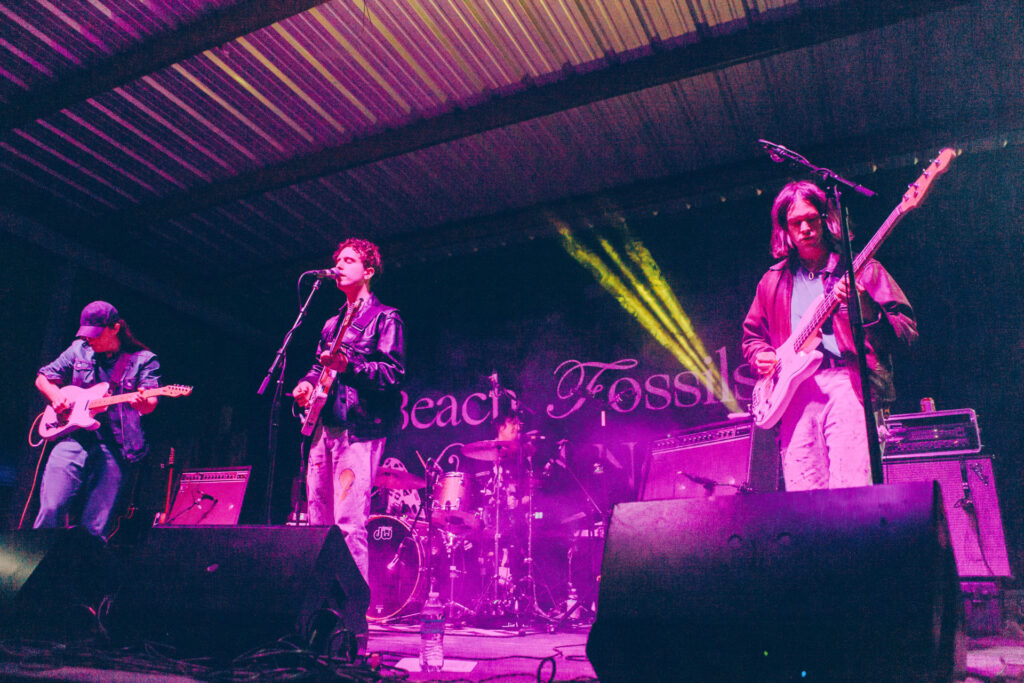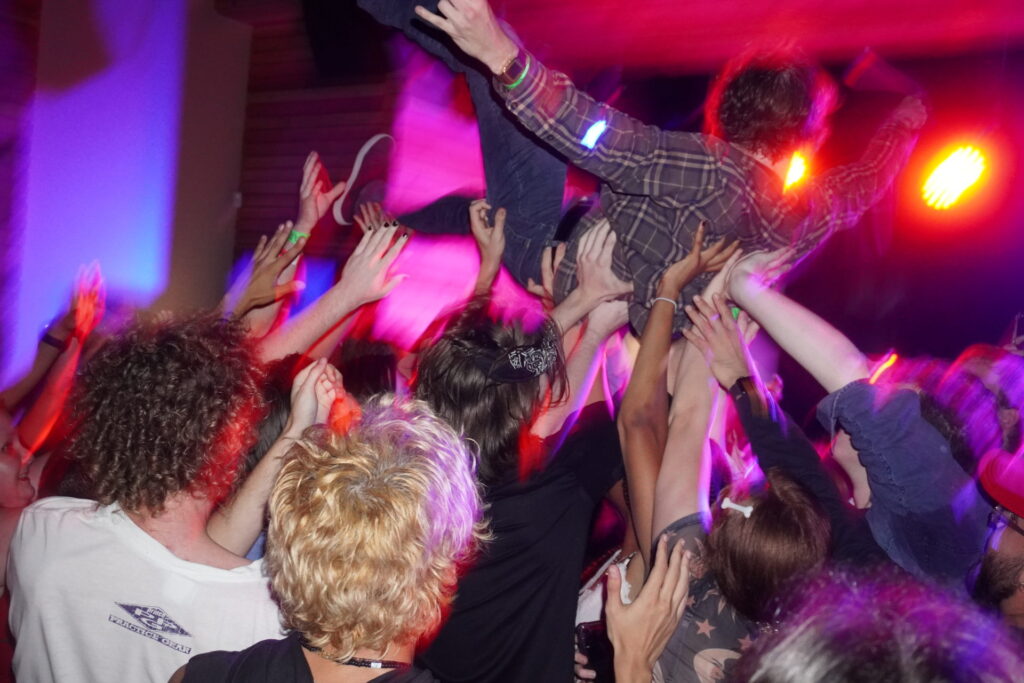Björk’s Return to Performing Cements Her as Pop Music Legend
Written by Alberto Najera on October 18, 2021
After many delays and frenzied anticipation, renowned musician Björk finally took to the stage in her motherland of Reykjavík, Iceland, in a glorious return to performing as part of the “Björk Orkestral” shows.
Each of the four shows, originally slated for June 2020, were set to be performed with varying members of the Iceland Symphony Orchestra and other collaborators. Three postponements later, and the first concert finally kicked off on October 11. Since the turn of the 20th century, not many have had the opportunity to see Björk live, in part because of her tendency to play in only a select few cities around the world, North America being no exception. The concert proved to be a tremendous success and a display of her genius for fans of the pop icon who had yet to see her recent live showings.
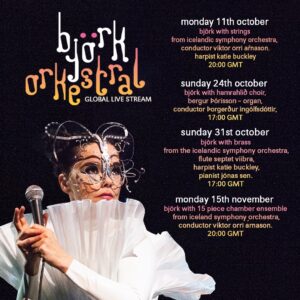
Dates for the Björk Orkestral shows
In recent years, it can be strange to remember that Björk was once a full-on pop star, appearing on the biggest talk shows and being responsible for major pop culture moments, namely her infamous swan dress which ignited much discussion. Where she was once very visible in the public eye (often to an uncomfortable degree), she now exists largely outside of the mainstream. She rarely conducts video interviews and almost always dons abstract masks when seen in public.
I’ll admit, my enigmatic perception of her is very likely slanted by her 2017 DJ set, which I attended at the now-defunct Day For Night festival. The only things I remember clearly from this DJ set are some kind of tribal chants, Lil Yachty’s 2016 smash hit “Minnesota” and getting my phone pickpocketed in the crowd. After that set, and the theft of my phone, my longing to see Björk perform her own songs on stage was only amplified.
However, I knew the chances of her returning to perform her beautiful songs in Houston — of all places — were virtually nonexistent. Throughout the last year, she used her social media pages to promote plans to perform in Iceland with various different instrumental accompaniments, but I only saw it as more Björk concerts I wouldn’t be fortunate enough to see.
Even after it was announced months ago that the shows would be live streamed — with the emergence of the digital medium during the pandemic — it was only days before the first concert that I decided to digitally attend. Frankly, though, I felt as if I had no choice upon learning from her Instagram that she would be performing “Aurora.” What I saw and heard was nothing short of awe-inspiring.
As the Icelandic night began (3 p.m. for me), members of the Icelandic Symphony Orchestra took their places, followed by their conductor and finally by Björk herself. She remained silent until the music began, offering only nods to her stagemates and a curtsy to the crowd. Her large, ruffled dress and mirrored, butterfly-shaped mask demanded everyone’s attention, of course, but it was with her first note that the grandiosity of Björk’s presence hit me; I was reminded that on my screen was someone larger-than-life — almost mythical.
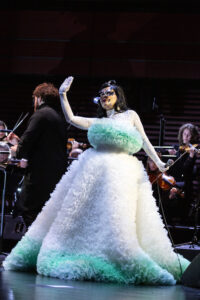
Björk photographed by Santiago Felipe, courtesy of bjorktours.com
“A juxtapositioning fate; find our mutual coordinates,” she sang, opening with the first track from her 2015 album Vulnicura. The swelling strings behind her evergreen voice entranced me, and all I could do was sit and pretend that I was worthy of witnessing it. Dancing and waving her arms during instrumental passages in that youthful and care-free way that is trademark Björk, she showed that she was still as comfortable on stage as she ever was.
This song complimented her voice particularly well, adding to an already stellar performance. It felt particularly impactful for her to open with part of her more current work — maybe because the words and feelings remained more fresh in her mind. Choosing to lead with a more recent song showcased the persisting brilliance in her music all throughout her career, even in the later years.
We first saw a new rendition of an older song with the piece “Aurora”, from 2001’s Vespertine. The strings on this track were a masterwork in arrangement and demonstrated Björk’s long history with the inclusion of classical and orchestral influences into pop music. Her harmonies here demonstrated that she was still entirely capable of sounding as great as she did in her early days. After all those years, her older music still kept an ethereal element about it.
Though her voice remains lovely, it’s not exactly the same as it was on albums past, but certainly no one can be expected to defy aging after all those years and a vocal surgery. However, the slight vocal differences in her performances of older material actually brought out the humanity and life in her art. In the same way anything living does, her art grows and ages with time, but the soul remains timeless. By hearing Björk’s older songs again, we are visiting old friends and thinking fondly on old times, while also finding new appreciation for how they have matured.
Comparing this concert to other recorded performances of these songs, it’s clear to see how the songs have lives of their own. Beyond the sound of Björk’s own voice, the production on the album versions have always differed from the live arrangements, which have in turn always differed from each other, changing like living, breathing organisms.
Björk remained versatile as ever in this showing. Different energies radiated from the stage throughout the night, altering with each song. A brooding energy permeated the air during “I’ve Seen It All”; “Sun In My Mouth” shifted to an angelic feeling emphasized by the harp; “Bachelorette” contained a mood of defiance, somehow present in the instrumentation as well as the words. The contributions of the Icelandic Symphony Orchestra to these songs can’t be overstated. Not just any musicians can match and compliment Björk’s energy, making their performances all the more impressive.
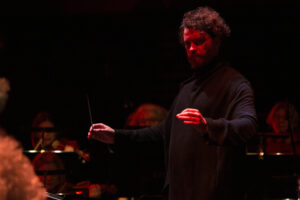
Icelandic Symphony Orchestra conductor Viktor Orri Árnason photographed by Santiago Felipe, courtesy of bjorktours.com
Returning to one of her biggest hits, “Hyperballad” was another highlight of the night. The lyrics resonated as deeply as they did when she first ever sang them. “I go through all this before you wake up so I can feel happy, to feel safe again with you,” Björk belted, singing with the same willful passion as she did on Post. Her voice now carried more experience, but the emotion behind it was all the same. Gone from the song were the club drums and synths that made it a 90’s pop hit; in its stead, an arrangement that replaces danceability with raw emotion surfaced. Even a song with such mainstream appeal can be played beautifully with a symphony when you’re Björk.
Before her final song, her usual post-song Icelandic thanks of “takk fyrir” was followed by a longer Icelandic speech. Seemingly innocuous, this foreign speech surprisingly managed to make me grateful for something I hadn’t often considered before. I suddenly realized how lucky I was, along with all English speakers, that Björk had elected to sing primarily in my native tongue throughout her career. Undoubtedly, the real mystique of her art lies in the execution that anyone can appreciate regardless of language, but to understand exactly what she is singing about adds an entirely new dimension to the music. On top of the weight carried by the notes and rhythms, the poetry recited along with it projects the singer’s complex emotions and experiences into the mind of the listener.
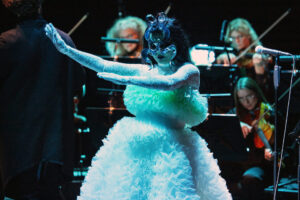
Björk photographed by Santiago Felipe, courtesy of bjorktours.com
Appropriately used to close out the night was the final track from Vespertine, “Unison.” Perhaps one of the most stunning songs in her entire discography, this particular orchestral arrangement by Björk, Zeena Parkins and Vince Mendoza takes the song to its ultimate form. It’s beautiful from beginning to end, but the chorus stands out as one of her best and most heart-wrenching. She beckons, “Let’s unite tonight; we shouldn’t fight; embrace you tight.” Pithy in its message, this song’s delivery is what makes it so powerful, with every note being held long enough to convey the love Björk has for the song’s subject.
The melody is personally one of my most beloved of all time in any genre of music. I can’t imagine hearing this chorus without stopping in amazement, or shedding a tear (or two, or several). No matter how much I say, it wouldn’t be enough to do justice to how stunning the performance of this song was. Björk put it best herself with a brief explanation of the song on her social media: “it is one of the few times when forces of harmony and equilibrium are going your way”.
score stories 4
more info and tickets here: https://t.co/bWXLfPyezP pic.twitter.com/fbOCFPNA1U
— björk (@bjork) October 11, 2021
The song concludes with a repeated harp loop that slowly fades out until the concert is concluded, leaving me with the feeling that I have just taken a long and tiring emotional hike. Beginning with an intro and ending with a closer, the concert maintained a ritualistic feeling, giving the sensation that every detail had been thoroughly planned.
On the surface, a viewer could instantly recognize Björk as a tremendous talent capable of utilizing her one-of-a-kind voice to its fullest extent. However, It is impossible to truly appreciate Björk’s genius without knowing that she is responsible for a great bulk of the production and arrangements on the songs performed, including all of “Stonemilker” and “Aurora”. We can only wonder about how the inner workings of her mind function, but what that mind has contributed to the world of popular music is indescribable.
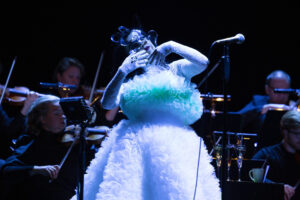
Björk photographed by Santiago Felipe, courtesy of bjorktours.com
This display of Björk’s work thus far gave the whole world a chance to see what exactly has made her an unstoppable force in modern music, and surely the rest of the Björk Orkestral shows will do the same. If you want to see one of the greatest artists of our time for yourself, buy a ticket to live stream one of her upcoming concerts. A portion of the sales will benefit an Icelandic women’s shelter and other women’s charities worldwide.
https://t.co/Lbhklx5d3V pic.twitter.com/98PTAMXxwg
— björk (@bjork) August 24, 2021
